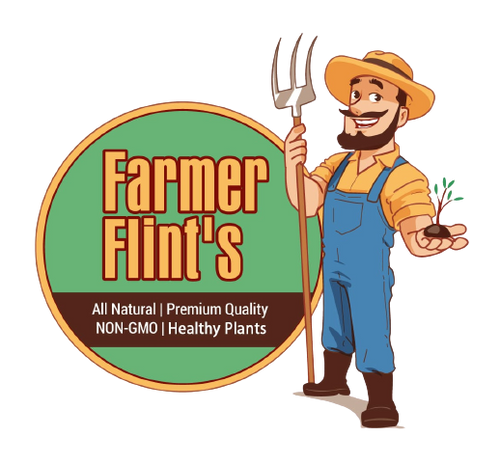Growing your own vegetables is rewarding, but there’s something even more meaningful about preserving the legacy of heirloom plants. Saving seeds from heirloom vegetables allows you to pass on a living history, while maintaining control over the flavors and varieties that matter most to you. Whether you’re new to gardening or have years of experience, learning how to collect and store seeds properly ensures that you can keep growing your favorite heirloom varieties year after year.
This comprehensive guide will walk you through why saving seeds matters, how to select the right plants, and step-by-step methods for harvesting, cleaning, drying, and storing heirloom seeds. By the time you finish, you’ll feel confident about taking part in one of gardening’s oldest and most important traditions.
Why Save Heirloom Seeds?
Heirloom vegetables are open-pollinated plants, meaning they breed true to type when their seeds are collected and replanted. Unlike hybrid seeds, which can produce unpredictable offspring, heirloom seeds carry forward the same traits year after year.
The benefits of saving heirloom seeds go far beyond nostalgia. Here are a few reasons gardeners worldwide choose to save and share these seeds:
-
Preservation of biodiversity: Every time you save a local or heritage seed, you protect genetic diversity that could otherwise disappear.
-
Adaptation to your climate: Plants grown and reseeded year after year adapt better to your local soil, pests, and weather patterns.
-
Cost savings: You’ll no longer need to buy new seeds each season.
-
Flavor and nutrition: Heirloom vegetables are often selected for superior taste and nutrition, not just yield or uniformity.
With these benefits in mind, let’s dive into how to save your own heirloom seeds successfully.
Step 1: Choose the Right Plants to Save Seeds From
Not all garden plants make ideal seed-saving candidates. To maintain quality, you should:
-
Grow heirloom (open-pollinated) varieties: Hybrid seeds will not produce true-to-type plants in the next generation.
-
Select healthy plants: Save seeds from the strongest, most vigorous, and most disease-resistant individuals in your garden.
-
Consider isolation distance: Many vegetable plants can cross-pollinate with other varieties of the same species. For example, if you grow multiple varieties of squash nearby, they may cross and produce unpredictable seeds.
If you plan to save seeds from a specific variety, you’ll get the best results if you:
-
Grow only one variety of that crop at a time, or
-
Use physical isolation like row covers or hand pollination to prevent cross-pollination.
This may sound intimidating, but even in a small backyard you can successfully save seeds with a bit of planning.
Step 2: Understand Plant Pollination Types
One of the biggest stumbling blocks for seed-savers is understanding how vegetables pollinate. Here’s a simple breakdown:
Self-pollinating plants: These are the easiest to save seeds from because their flowers pollinate themselves before they even open. Examples include:
-
Tomatoes
-
Peas
-
Beans
-
Lettuce
Cross-pollinating plants: These rely on wind or insects to move pollen between different plants, making them more prone to crossing with other varieties. Examples include:
-
Squash
-
Pumpkins
-
Corn
-
Cucumbers
-
Peppers
If you want to save seeds from cross-pollinating plants, consider planting only one variety at a time or separate varieties by distance. Hand pollination techniques, such as bagging flower buds and manually transferring pollen, are another option.
Step 3: Wait for Proper Seed Maturity
When saving seeds, timing is everything. The seeds must reach full maturity on the plant, which is often beyond the point you’d harvest them for eating. Here’s what that means for a few common heirloom vegetables:
-
Tomatoes: Let fruits fully ripen and even start to over-ripen before saving seeds.
-
Peas and beans: Allow pods to turn brown and dry on the vine before picking.
-
Peppers: Harvest once peppers are fully colored and slightly soft.
-
Squash: Wait until the rind hardens and the plant vine dies back.
Harvesting seeds from immature fruits will usually result in low germination rates or weak seedlings the following year.
Step 4: Harvest Seeds Properly
Once you have fully mature fruits or pods, you can begin seed harvesting. Methods will vary depending on the type of vegetable:
Wet Method (for pulpy fruits like tomatoes and cucumbers):
-
Scoop out seeds along with their pulp.
-
Place them in a glass jar or bowl with a bit of water.
-
Let the mixture ferment for 2–4 days, stirring once a day.
-
Good seeds will sink; bad seeds and pulp will float.
-
Pour off the liquid and rinse the good seeds in a fine sieve.
-
Dry thoroughly on a paper towel or screen, stirring daily to avoid mold.
Dry Method (for pods and dry-seeded vegetables):
-
Pick pods or heads when they are fully dry.
-
Gently shell them over a clean surface.
-
Remove any plant debris.
-
Spread seeds in a single layer to dry for at least a week.
For both methods, ensure seeds are completely dry before storing. Moisture is the enemy of seed longevity.
Step 5: Clean and Dry Your Seeds Thoroughly
Once harvested, seeds should be cleaned of any plant debris or bits of fruit. Spread seeds in a single layer on screens, trays, or paper plates in a warm, airy place out of direct sunlight. Stir them daily for even drying.
If you rush the drying process, seeds can mold in storage. As a rule of thumb, seeds are ready for storage if they snap cleanly when bent (for hard seeds like beans) or break rather than bend (for thinner seeds like lettuce).
Step 6: Label and Store Seeds Correctly
Accurate labeling is crucial. You think you’ll remember which tomato variety those seeds came from next spring, but it’s easy to forget. Include:
-
Plant type
-
Variety name
-
Date of harvest
-
Any special notes (like disease resistance or plant vigor)
Store seeds in envelopes or glass jars with a silica gel pack to control humidity. Place them in a cool, dark, and dry location such as a basement, closet, or refrigerator. Ideal storage conditions are around 40°F with less than 40% humidity.
Properly stored, many vegetable seeds will last multiple years:
-
Tomatoes: 4–6 years
-
Peppers: 2–4 years
-
Beans: 3–5 years
-
Squash: 4–6 years
-
Lettuce: 2–4 years
Step 7: Germination Testing Before Planting
Each year before planting, it’s wise to do a quick germination test. Here’s how:
-
Place 10 seeds on a damp paper towel.
-
Fold it over, place it in a plastic bag, and keep it warm.
-
After the recommended germination period for that crop, count how many sprouted.
A germination rate of 80% or higher is great. If rates are low, sow extra seeds or consider replacing that batch.
Avoiding Cross-Pollination: Practical Tips
One of the biggest frustrations with seed saving is ending up with unexpected hybrids. Here’s how to avoid it:
-
Hand pollination: Cover blossoms with a cloth or mesh bag, then manually transfer pollen from a chosen flower.
-
Distance: Separate different varieties of the same species as far apart as your garden allows.
-
Timing: Plant varieties with staggered bloom times so they don’t cross.
For example, if you grow two heirloom zucchini varieties, you might plant one early in the season and the other later, reducing the chance of overlap.
Tips for Specific Heirloom Vegetables
Let’s look at a few heirloom favorites in more detail.
Tomatoes
-
Self-pollinating, so they’re beginner-friendly.
-
Use the wet fermentation method to reduce disease.
-
Dry on screens for even airflow.
Peppers
-
Mostly self-pollinating but can cross with other peppers.
-
Isolate varieties by distance or cover flowers.
-
Let fruit fully ripen to maximum color before harvesting seeds.
Beans
-
Easy to dry on the vine.
-
Shell pods carefully to avoid damaging seeds.
-
Very high storage life if kept dry.
Squash
-
Cross-pollinates easily, so isolation is critical.
-
Let the squash cure on the vine until the skin hardens.
-
Remove seeds and wash thoroughly before drying.
Lettuce
-
Self-pollinating, though sometimes insects help.
-
Let flower heads bolt and dry on the plant.
-
Harvest when fluff forms and seeds are dark.
How to Share Saved Seeds with Others
Seed saving is a wonderful personal skill, but it’s also a community-builder. You can:
-
Start a neighborhood seed swap
-
Donate to a local seed library
-
Trade with other gardeners online
-
Share extra seeds with community gardens
Be sure to include labeling and growing tips to help other gardeners succeed. In this way, heirloom varieties keep thriving from backyard to backyard, generation after generation.
Common Seed Saving Problems (and How to Solve Them)
Even with best efforts, issues can come up. Here’s how to troubleshoot:
-
Moldy seeds: Usually from poor drying; redry thoroughly and store with silica gel.
-
Low germination: Test each year and refresh your stock every few years.
-
Cross-pollination surprises: Use isolation or hand pollination next season.
-
Pests in stored seeds: Store seeds in airtight containers or freeze them for a week before long-term storage to kill insects.
The Joy of Carrying On a Living Legacy
Saving seeds is about more than next year’s garden. It’s about stewardship, resilience, and heritage. Every time you collect seeds, you’re preserving centuries of careful selection, traditional growing methods, and unique flavors that commercial agriculture can’t always match.
By saving seeds from your heirloom vegetables, you join a long line of gardeners stretching back thousands of years. This tradition supports biodiversity and food independence in a world that is increasingly dependent on commercial seed supplies.
Whether you grow Brandywine tomatoes, Blue Lake pole beans, or Black Beauty zucchini, heirlooms tell a story of place, people, and time. When you save and share those seeds, you pass that story on.
Final Thoughts
If you’re new to seed saving, start with something simple: tomatoes or beans. Gain confidence, then branch out to peppers or squash. Over time, you’ll build a skillset that empowers you to preserve your own food heritage — and maybe even develop your own landrace seeds adapted perfectly to your unique garden.
Remember these key takeaways:
✅ Save seeds only from healthy, vigorous heirloom plants
✅ Understand pollination to avoid unwanted hybrids
✅ Allow seeds to fully mature
✅ Dry them thoroughly and store them well
✅ Label clearly and share generously
Heirloom seed saving is both an art and a science, but once you get started, you’ll never look at a vegetable the same way again. Your garden will become a living archive of your tastes, your climate, and your care — a legacy you can hand down, one seed at a time.








